What a great weekend we just had! The weather was picture perfect, all sorts of flowers and trees were in bloom and the stage was set for a great weekend long Mass Audubon Field School. I was teaching “A Brush with Botanicals” and was joined by 6 students who turned out to be willing, brave and quick learners, too!
We started off with a bit of a chat about the history of botanical painting in watercolor and then went to work on some color mixing and various brushstrokes that would come in handy for this kind of painting. Many of the students were beginners but it was a different kind of painting even for those with more experience with watercolors.
After a morning of painting exercises everyone was ready to paint a flower. We set up in the shade outdoors. It may have been May but it was pretty hot in the sun already!
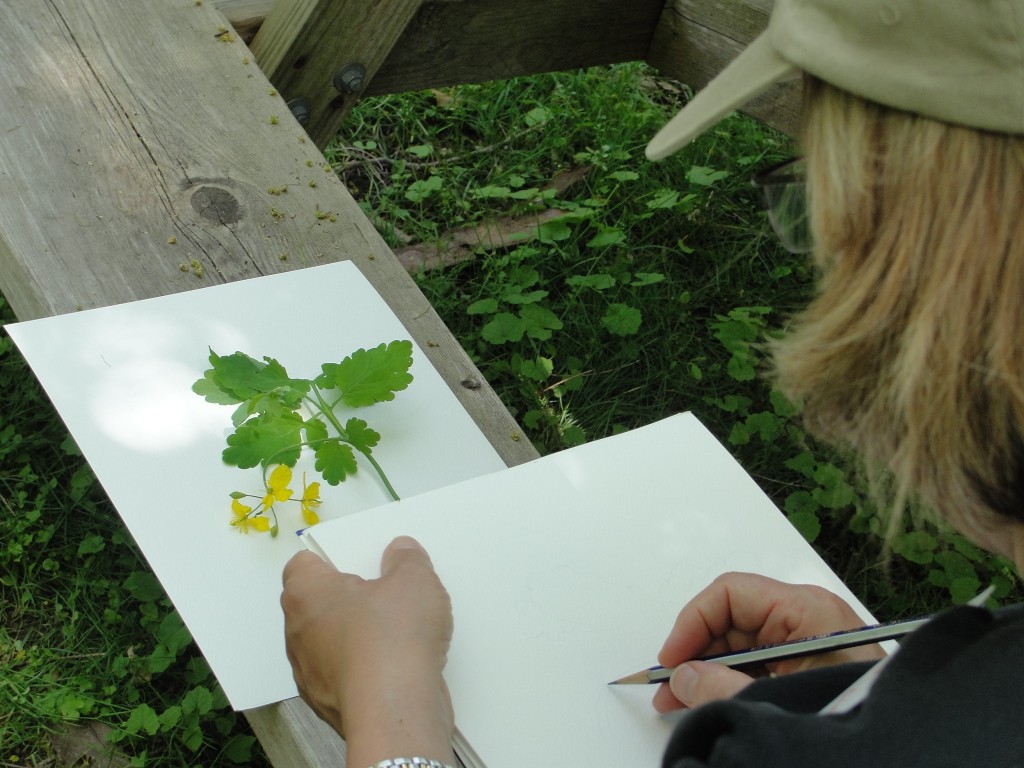 Everyone was very quiet as they worked. They were concentrating hard!
Everyone was very quiet as they worked. They were concentrating hard!
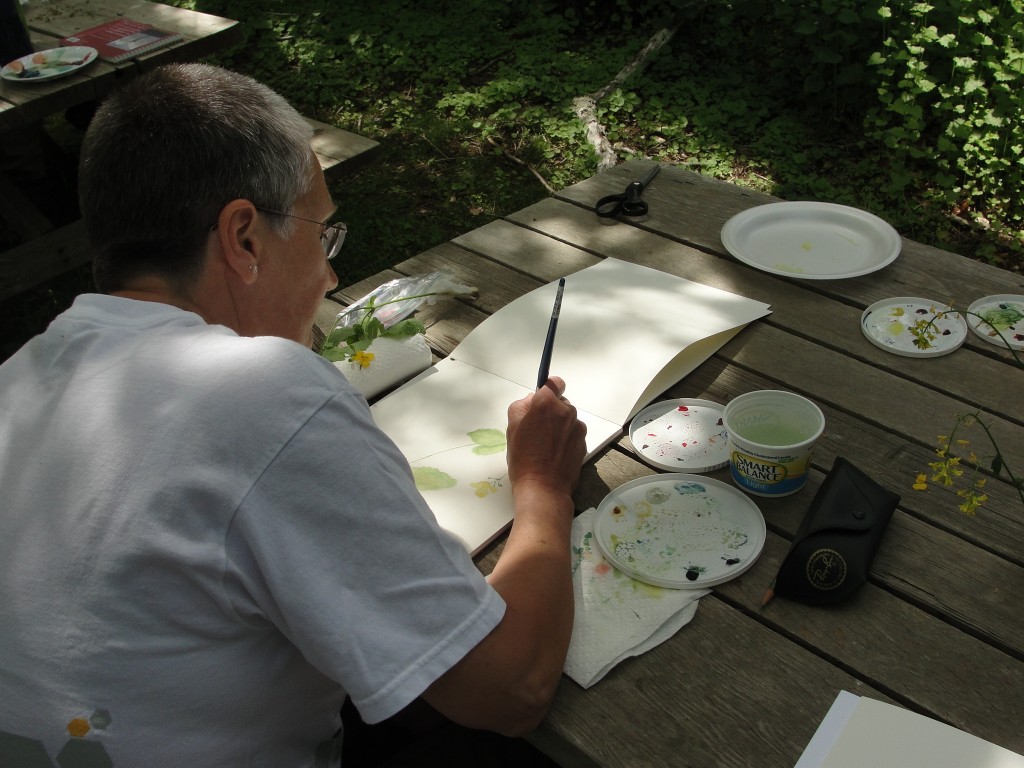 Plants wilt quickly out of water but the students were quick to use cracks in the table, their painting water and sheets of white paper as backgrounds.
Plants wilt quickly out of water but the students were quick to use cracks in the table, their painting water and sheets of white paper as backgrounds.
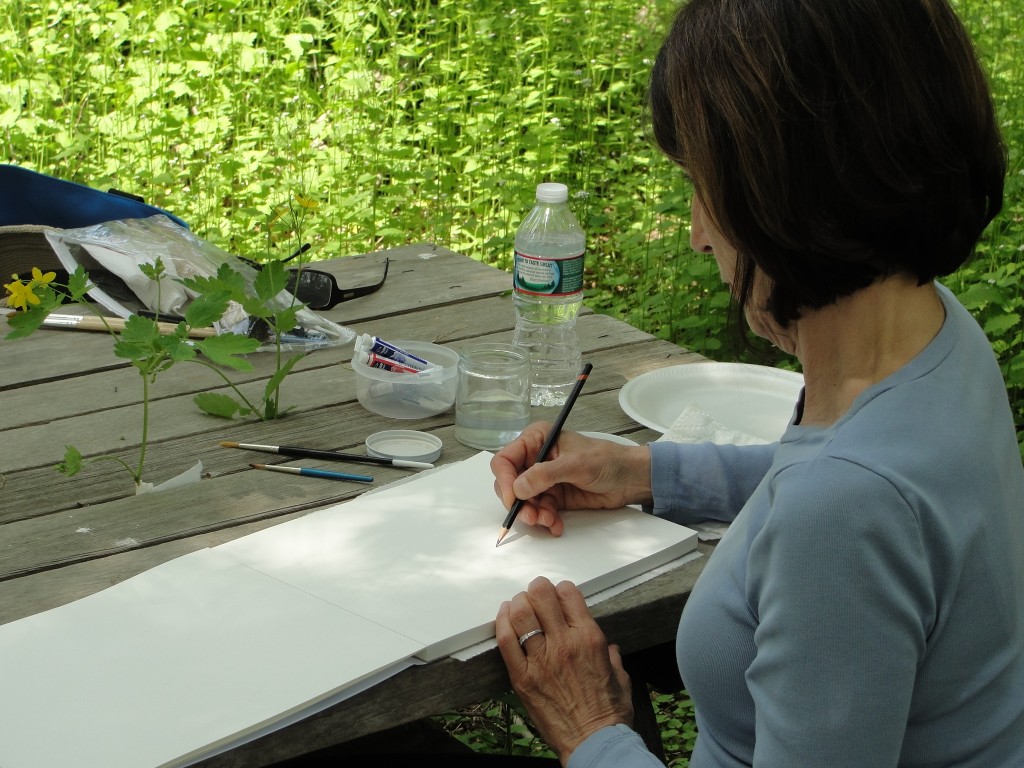 On Sunday the weather was still fine and we headed out to paint irises we had spied out in a field the day before…
On Sunday the weather was still fine and we headed out to paint irises we had spied out in a field the day before…
 The irises proved to be more of a challenge than some originally thought they would be but they worked hard on getting the petals right. Irises are poetic and fun to look at but tough to paint.
The irises proved to be more of a challenge than some originally thought they would be but they worked hard on getting the petals right. Irises are poetic and fun to look at but tough to paint.
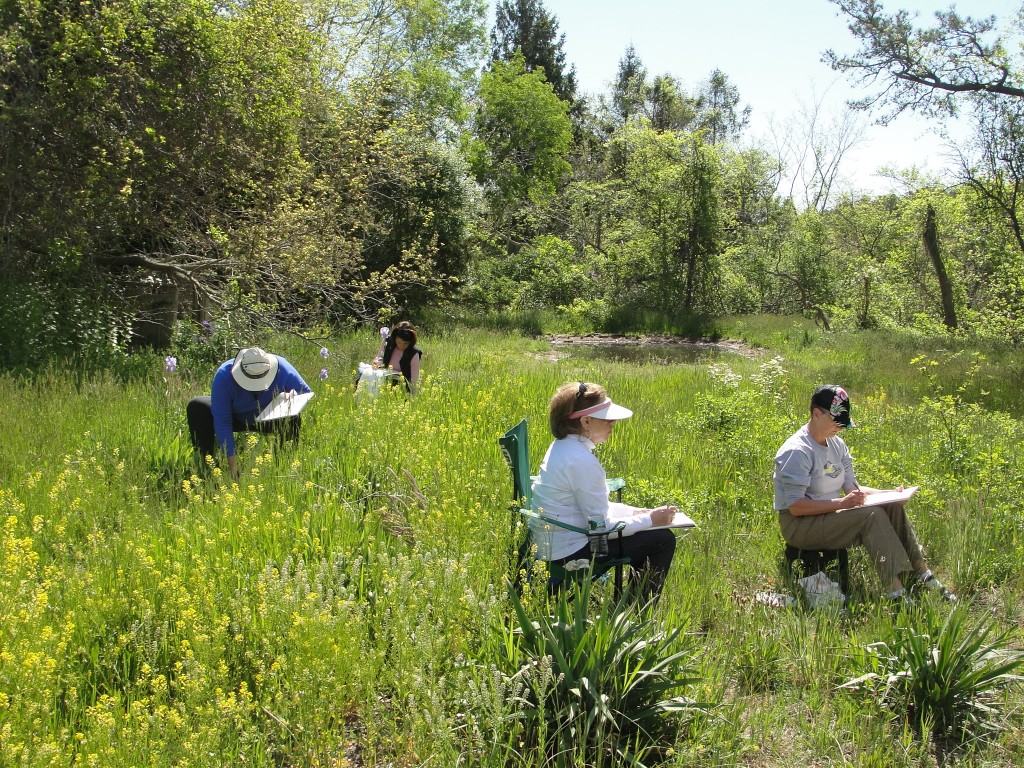 We ended up bringing some irises indoors to paint and then spent the afternoon going out onto the sanctuary to find branches, flowers and plants to draw and paint. I think even the students were pleased and surprised at how well their attempts worked out.
We ended up bringing some irises indoors to paint and then spent the afternoon going out onto the sanctuary to find branches, flowers and plants to draw and paint. I think even the students were pleased and surprised at how well their attempts worked out.
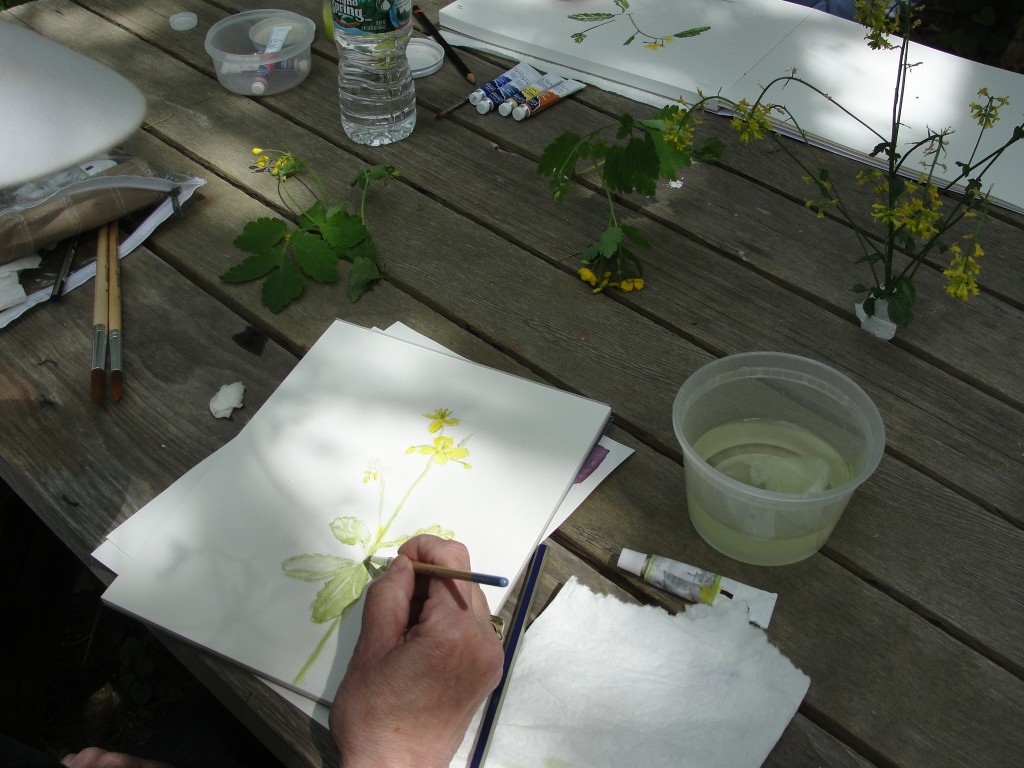 I am always humbled by my beginning drawing and painting students because those first attempts are often awkward and far from what they hope for or imagine. And yet, they persevere. They are eager and willing to learn. They listen, they watch, they absorb as much as they can. And frankly, it seems to me it is very brave to draw or paint in public in a class and share work that shows signs of struggle but for all these students their work also showed signs of triumph. I was honored to be in their presence. It was a great weekend.
I am always humbled by my beginning drawing and painting students because those first attempts are often awkward and far from what they hope for or imagine. And yet, they persevere. They are eager and willing to learn. They listen, they watch, they absorb as much as they can. And frankly, it seems to me it is very brave to draw or paint in public in a class and share work that shows signs of struggle but for all these students their work also showed signs of triumph. I was honored to be in their presence. It was a great weekend.
I will be doing another Field School “Sketching in Nature for Scaredy Cats” in Wellfleet in August.
